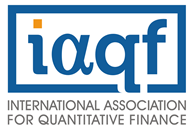
6:00 PM Seminar Begins
7:30 PM Reception
Hybrid Event:
Fordham University
McNally Amphitheater
140 West 62nd Street
New York, NY 10023
Free Registration!
For Virtual Attendees: Please select virtual instead of member type upon registration.
Abstract:
The collapse of Silicon Valley Bank (SVB) highlights the growing transformation of deposit-taking institutions into synthetic hedge funds, blending private equity-style banking with hedge fund-like trading strategies. This paper provides a conceptual framework to examine SVB’s hybrid model, which combined on-balance-sheet activities--such as venture capital credit lines and subscription facilities--with off-balance-sheet speculative strategies, including swap spread arbitrage.
These innovations positioned SVB as a synthetic hedge fund, leveraging financial engineering to enhance returns while operating within a regulatory framework designed for traditional banks. SVB’s failure underscores the tension between speculative risk-taking and the stability imperatives of deposit-taking institutions. The reliance on rigid financial models and misinterpreted macroeconomic signals led to premature hedging exits, exposing the bank to rising interest rates and liquidity stress.
The paper explores how the evolution of bank-driven synthetic hedge funds reshapes banking risk management, particularly through synthetic risk transfer (SRT), which allows institutions to redistribute risk while maintaining exposure. However, these strategies heighten systemic interconnectedness, amplifying liquidity mismatches and market fragility. Finally, the paper considers whether central banks must adapt as synthetic hedge funds of last resort, stabilizing a financial system increasingly shaped by hybrid institutions that blur the lines between banking and investment fund strategies.
Bio:
Elham Saeidinezhad is a Term Assistant Professor of Economics at Barnard College, Columbia University, where she teaches finance courses. She also teaches at NYU Stern.
Her research explores the intersection of market microstructure, industrial organization, and financial stability. She leads the Market Microstructure Project, an independent initiative surveying market dynamics to explore changes in financial market infrastructures and their implications for the broader financial system.
Previously, she was a Lecturer at UCLA’s Economics Department, teaching courses in Money and Banking and Monetary Economics. She also worked as a research economist in the International Finance and Macroeconomics Group at the Milken Institute, studying post-crisis structural shifts in capital markets. As a postdoctoral fellow at the Institute for New Economic Thinking (INET), she collaborated with Prof. Perry Mehrling on the Money View framework. She holds a Ph.D. in Empirical Macroeconomics from the University of Sheffield and a bachelor’s degree from Shiraz University.

